Story by Brandes Elitch
Photos by Hugues Vanhoolandt
Let me start by saying right out that the 2018 Pebble Beach Concours d’Elegance was so utterly surprising and overwhelming that I suspect I cannot convey in mere words the totality of the experience. I doubt if so many fabulous automobiles have ever been assembled in one spot, anywhere, at one time, and with logical and consistent themes as well.
Now I realize that these are strong words, so let me provide a bit of perspective. I started attending the events at Monterey back in 1979, and I have never missed a year since, although the events have changed from year to year. I attended the Pebble Beach show for about 25 years, and I have some great memories, such as helping John Bond push his Railton to the field when it would not start. But eventually, I got tired of the traffic and the crowds and the impossibility of finding parking, and finally I just decided to go home Saturday night after the AFAS reception.
Pebble Beach environs
To be fair, the specter of those three inevitabilities overhangs every event during the week, and is not limited to this show. But here we have a closed, gated community, with very few roads in and out, and very limited parking because, other than the eight golf courses, there is no need for public parking. So, if you are a mere mortal, on Sunday morning you will drive through the Pacific Grove gate and wait for a bus to take you across the 17 Mile Drive to the Lodge at the opposite end of the Del Monte Forest. This entails some significant wait time at both ends of the day, because there are a lot of people there. If you think I am exaggerating, a report by the Monterey Peninsula Chamber of Commerce four years ago estimated that 85,000 people attended Car Week. Now there are many more events, stretching over two weeks, and the locals have learned not to leave their homes then because of the traffic congestion.
By now, many of our readers will have downloaded stories and pictures of the show and the auctions, so I will not duplicate what you have likely already seen. Rather, I will try to give you a sense of place. Our readers live all over the world, and many will never visit Pebble Beach. For one thing, Car Week is a pretty expensive gig. As my friend Joe says, it is cheaper to go to Paris for the week than to pay the ticket prices, the three-night minimum lodging fees, and inflated restaurant “Uber pricing” during the week.
Pebble Beach is actually an unincorporated residential community of very expensive single family homes. The Lodge and four of the golf courses are owned by the Pebble Beach Company. Originally a Mexican land grant, in 1880 it was sold to the “Big Four” railroad magnates: Crocker, Stanford, Huntington, and Hopkins. Twelve years later, they laid out the famous “17 Mile Drive” as a way to attract wealthy potential buyers of large residential tracts. It is a beautiful place, in part because many of the large homes are hidden by the extensive vegetation, and because of the unspoiled coastline. Monterey County hosts about 4.6 million visitors a year, and in 2016 tourist spending brought in about $160 million here. This is big business, and the primary attraction is the “stunning coastline and scenic countryside.”
This year I decided to attend when I learned that Citroen would be a feature. I had covered this already in my article last year on the striking display of 46 Citroens at the Mullin Museum in Oxnard. I had also attended the 50th anniversary of the DS in 2005 outside Paris, so the cars here did not surprise me. But I’ll bet that they sure did for 95% of the spectators at the show, who were most likely surprised to learn that the DS has been voted the “most beautiful car of all time” by the most sophisticated auto designers and engineers in the world.
There were plenty of other features. The Tucker automobile, including a bare chassis, Rollston coachbuilt cars, the OSCAs, a dozen cars of the Indian Raj, two “Red Flag” limousines from communist China, Indianapolis racers from the “1960s Revolution at Indy,” and American dream convertibles from the 1950s. I can pretty well guarantee that you will never see such a comprehensive presentation of OSCAs again, or Scarabs, or Tuckers, because the organizers have cornered the market for each one this year, as they have done in the past.
Now here is an example of what was on display here. The Hudson Italia is a special car and it is owned by Marreyt Classics. It is totally original. Hudson created a sensational car in 1948 with its new Step Down design, but by the early fifties it was starting to look dated and because of the semi-monocoque design it was too difficult to change the roofline and open it up. They finally did this in 1954. Between the style changes fomented by Generous Mother in the early fifties and the end of the seller’s market, Hudson needed something new.
Their head of styling, Frank Spring, went to Europe and met with the head of Touring Superleggera, Carlo Anderloni, to build a prototype on a Hudson Jet chassis. They went to dinner and made a sketch on a napkin. They made a few Italias. With the exception of the unfortunate taillights coming out of fake exhaust ports, the car is quite well done, but it would have been too expensive to sell in the US at the time.
Pebble Beach philosophy, judges, selection
One of the things that makes this show unique is the philosophy that it should be the ‘First Place’ where a newly fully restored car will go to be judged before it is exhibited elsewhere, and believe me, they are not kidding around about this. Second is the quality of the judges, and there are more than 100 authorities, plus 50 honorary judges. As Chief Judge Chris Bock says, in the understatement of the week, “It’s tough when all the cars are perfect!” That is not an exaggeration. Third is the expertise of the selection committee. The featured marques and special classes are announced in the fall, ten months before the show. Formal entry applications are sent out in November and due back in January. Anyone can apply. A committee of about 15 people will review over 1000 applications. Every car is carefully considered during a two day Selection Committee meeting. Just over 200 cars are selected. Last year 41 came from overseas, and 54 were first time exhibitors.
I am always asked why and how the Pebble Beach judging standard came about. The reality is that most of the cars on display have been restored to a state that is better than when they were new. The answer is found in the rivalry between two icons of car collecting of the 1960s: Bill Harrah and Jack Nethercutt. Harrah, of course, owned casinos and a museum with 1000 cars. When he died, without a will, Holiday Inns bought the casino operation and discovered that they also had a car museum, which they dispersed in a series of 3 auctions. Nethercutt founded and owned Merle Norman Cosmetics, and he built a beautiful museum in Sylmar, just north of Los Angeles, that is a must see for anyone visiting the area today. These two men built their own restoration shops and hired the best people they could find to outdo each other. Nethercutt took 6 wins at Pebble Beach; Harrah took 4. They set the standard that judges had to adapt to, which is called a Hundred Point Restoration. Chris Bock says, “J.B. and Bill really chased each other to outdo one another, which had a remarkable impact on the quality of restoration over the years. They were so influential – everybody was paying attention to them.”
The planning for the show is meticulous – even the three posters are special. I had to get the Tour Poster of 3 DS Citroens in flight, signed by artist Barry Rowe. The show program is a collector’s item too, with erudite articles on each special feature. The article on Eisenhower-era cars was done by Ron Vershoor, who has done a magnificent job as editor of the publications for the Classic Car Club of America for some time now.
For the record, there are 26 judging classes, including the following (plus the features this year):
Antique
Vintage Era Sporting
American Classic Open and Closed
Packard
Duesenberg
Rolls Royce prewar
European Classic Early, Middle, and Late
Italian Classic
Prewar and Postwar Preservation
Ferrari Grand Touring and Competition
Postwar Touring and Grand Touring and Sports
Obviously you could spend a few hours on just one of these classes. Because the owners are present, you can go right up to them, particularly if they have already been judged, and ask them about their car. This is one of the best parts of the show.
Too much to process
In design school, we are taught, “Proportion, Proportion, Proportion.” But just like fine art, other things come into consideration, such as the history of the marque and its designers, engineers, managers, and racing heritage, and of course the visual elements of perspective, balance, and the effect of light, shadow, contrast, hue, value, and texture. If you have studied automobile design, you cannot help but start to categorize and judge things for yourself, but after seeing a few dozen of the greatest cars you have ever read about, such as the last Duesenberg, your mind starts to go into overload. It is too much to process, at least for me. It is one astonishing object after another. At most shows, you stop at every fifth or tenth car to inspect it in detail. Here, you cannot go on until you have spent at least a few minutes at each one just trying to take it all in. At some point, it is like the Robin Williams movie, “Moscow On the Hudson,” as he escapes from Communist Russia and visits an American supermarket for the first time. When he sees the immense variety of coffee in the coffee aisle, he faints on the spot and falls on the floor. That’s pretty much the way I felt this year.
It would be a fool’s errand to choose the most outstanding cars on display. My companion Chris found his favorite to be the 1937 Cadillac series 90 V-16 with a Swiss Hartmann body, owned by the Patterson Collection in Louisville, KY. I jotted down a short list of things that impressed me, aside from cars I own or previously owned, such as the Citroen and a Lagonda V12. Here is my shortlist as illustrated by Hugues Vanhoolandt:
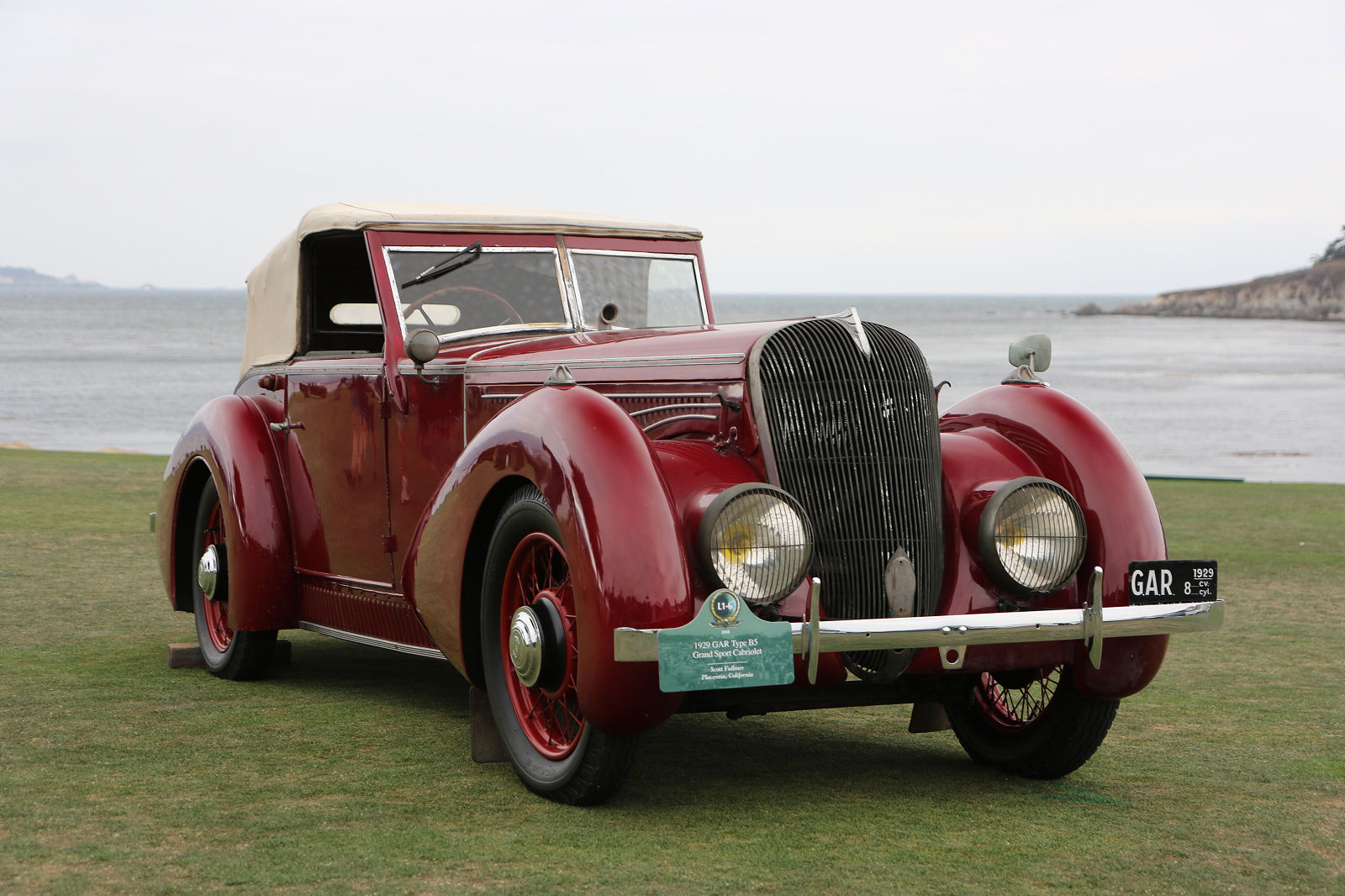
An unrestored “garage find” 1929 G.A.R B5 LWB 8 hp, the only convertible and only car with a custom body (by Pourtout).
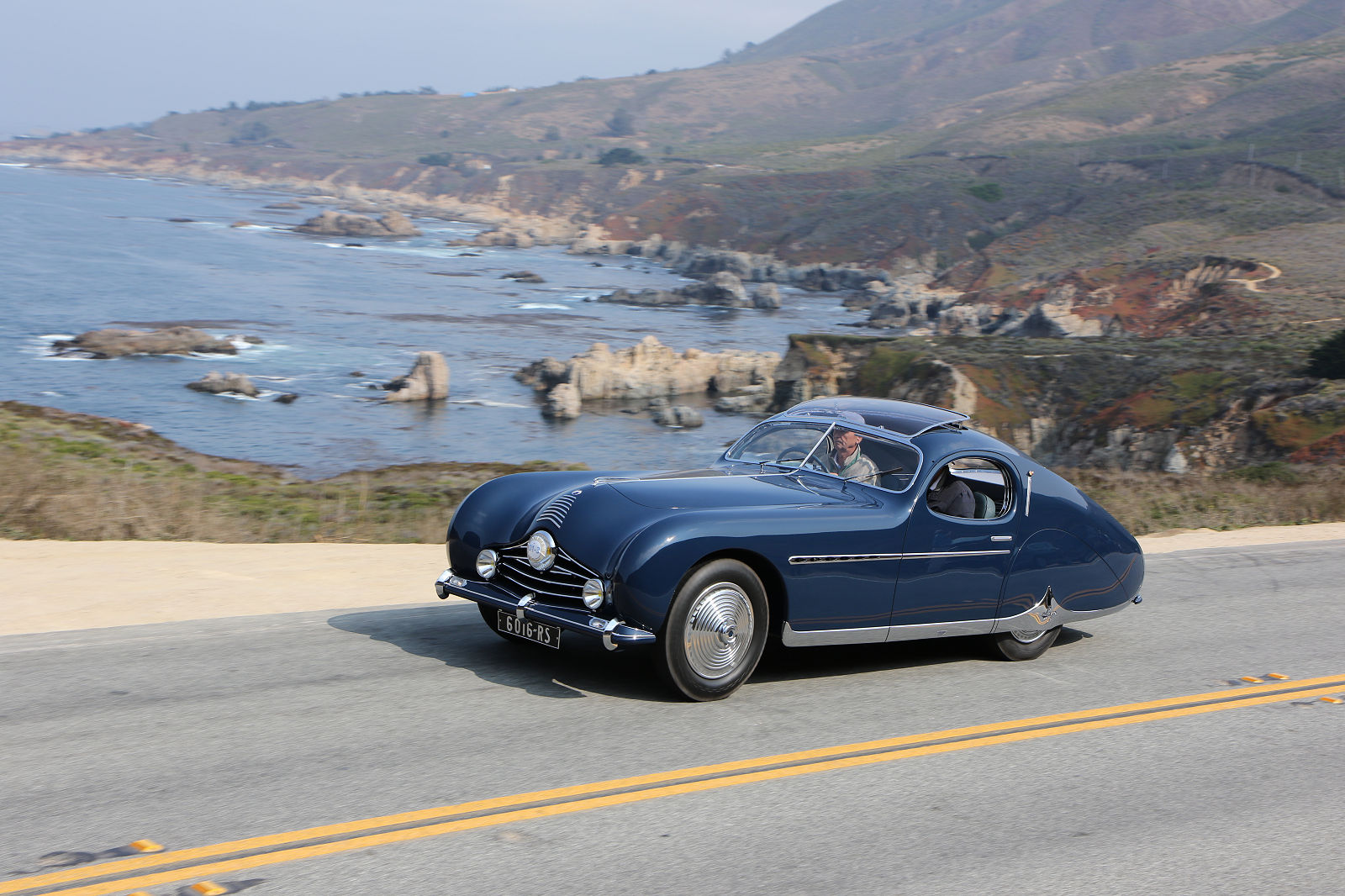
1948 Talbot Lago T 26 Grand Sport fastback coupe, Figoni coachworks, owned by Robert Kudek, Czech Republic.
Thanks to the entrants, organizers, judges, sponsors, and all the people that make this show possible, and not incidentally raise a significant amount of money for local charities. I wonder what will be featured next year?
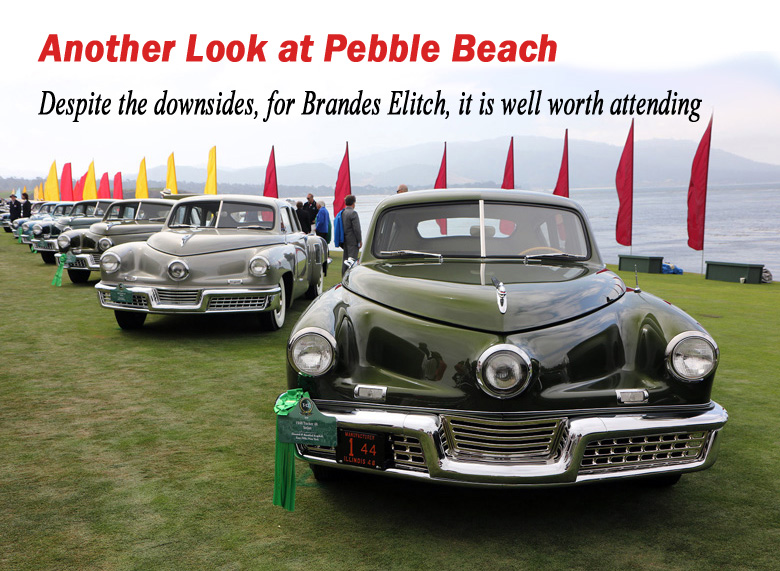



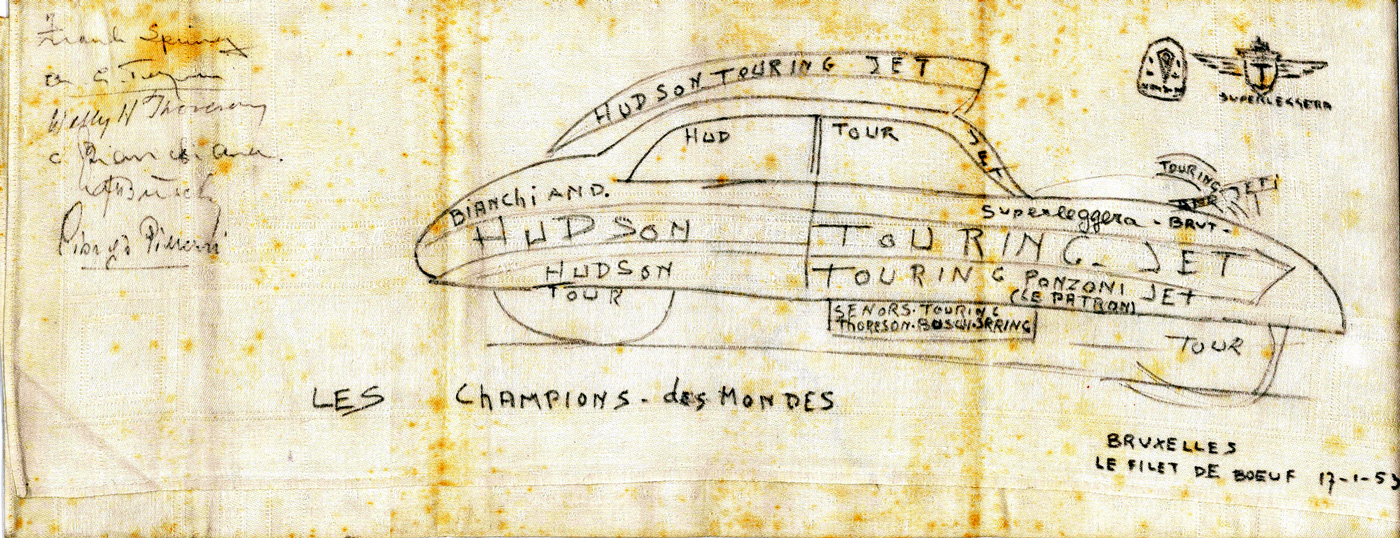
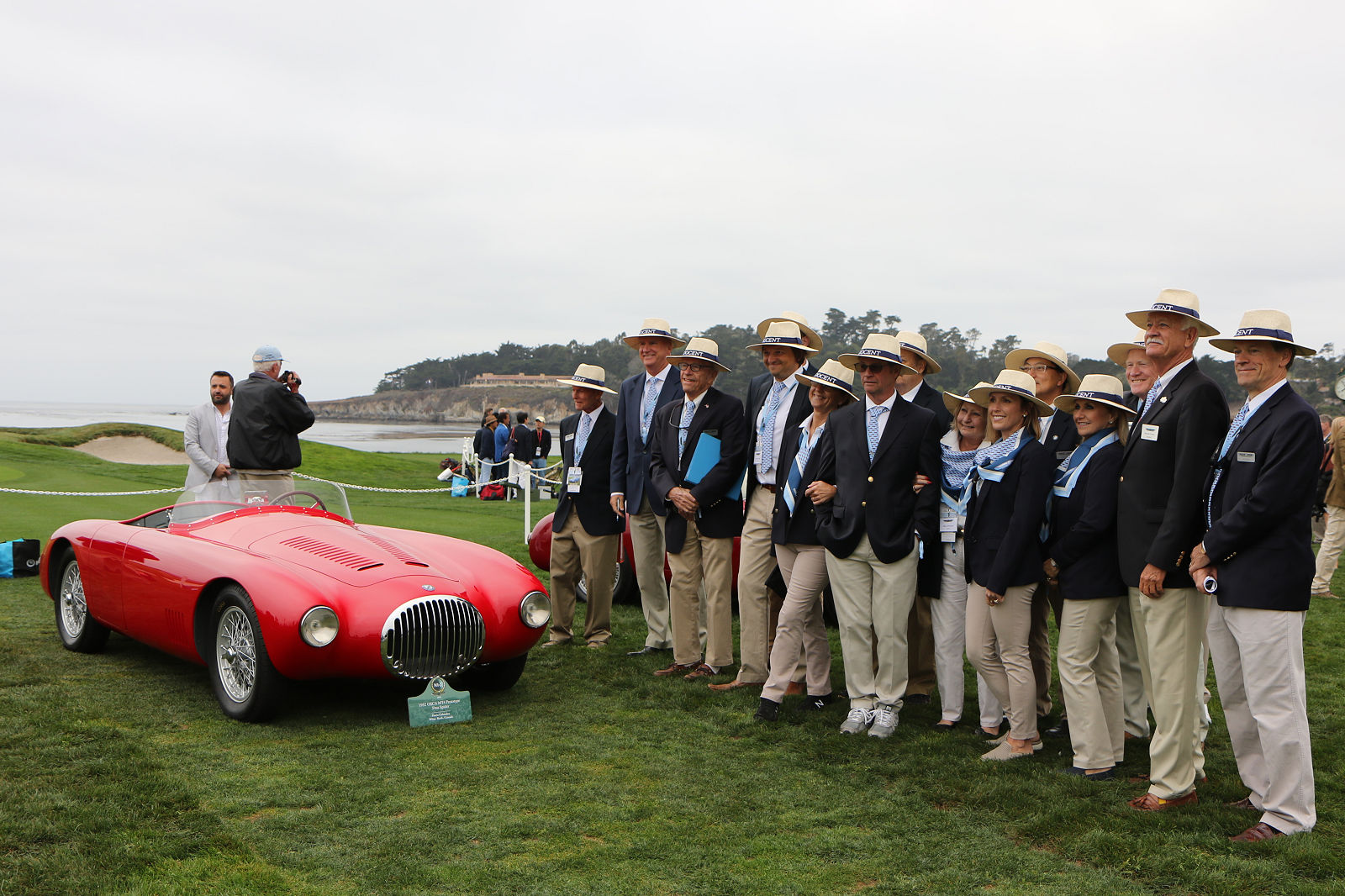
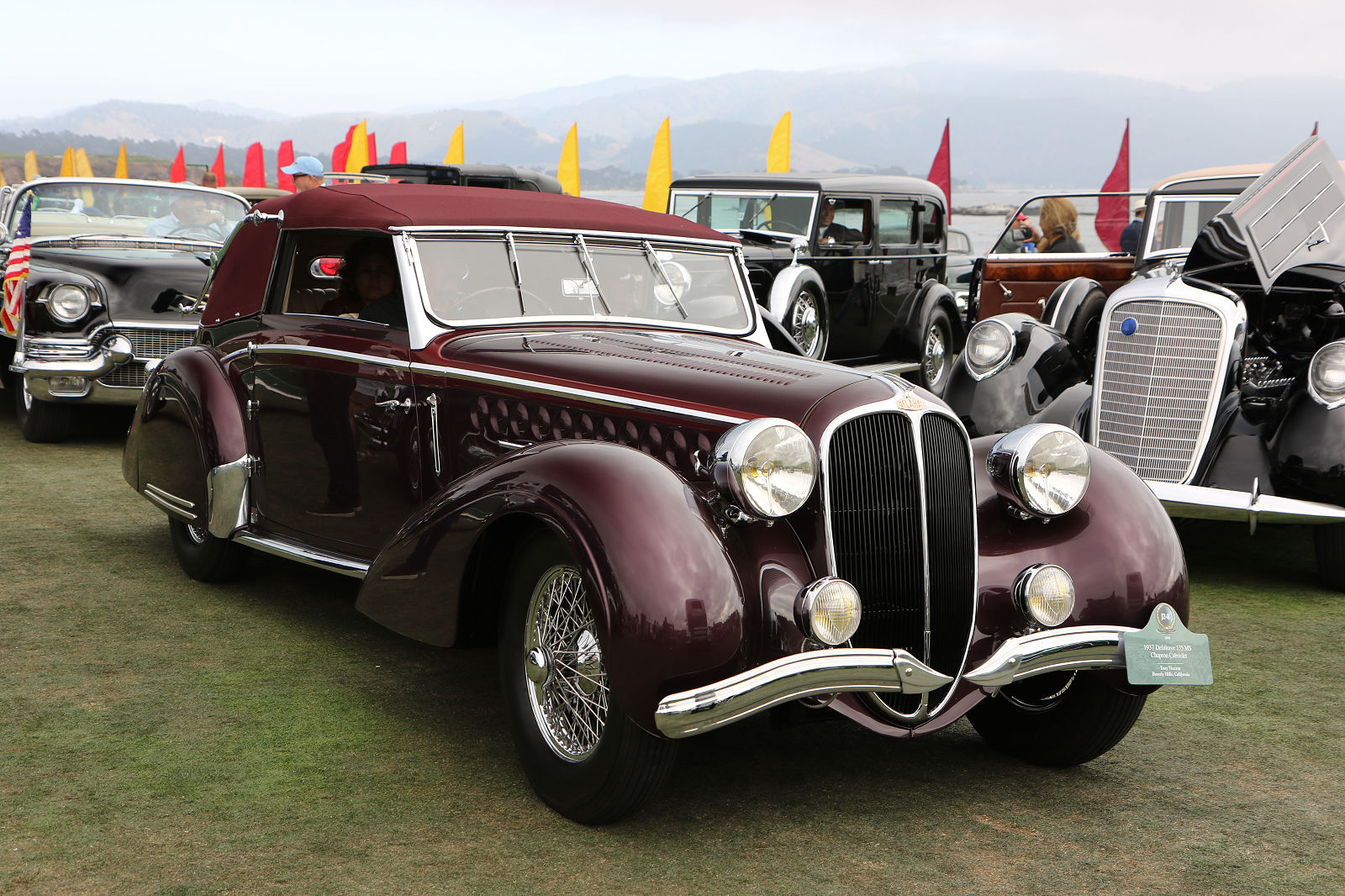
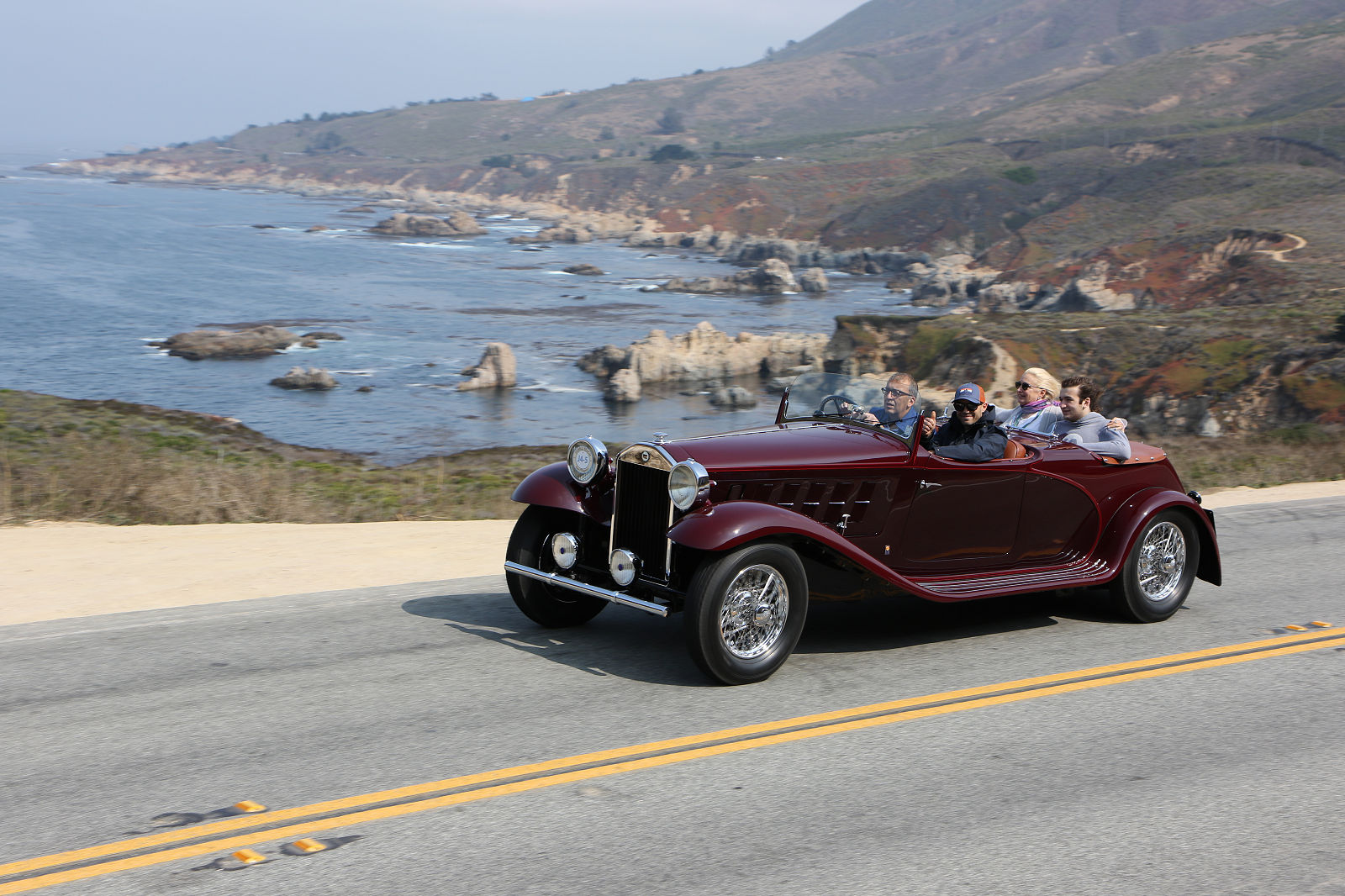

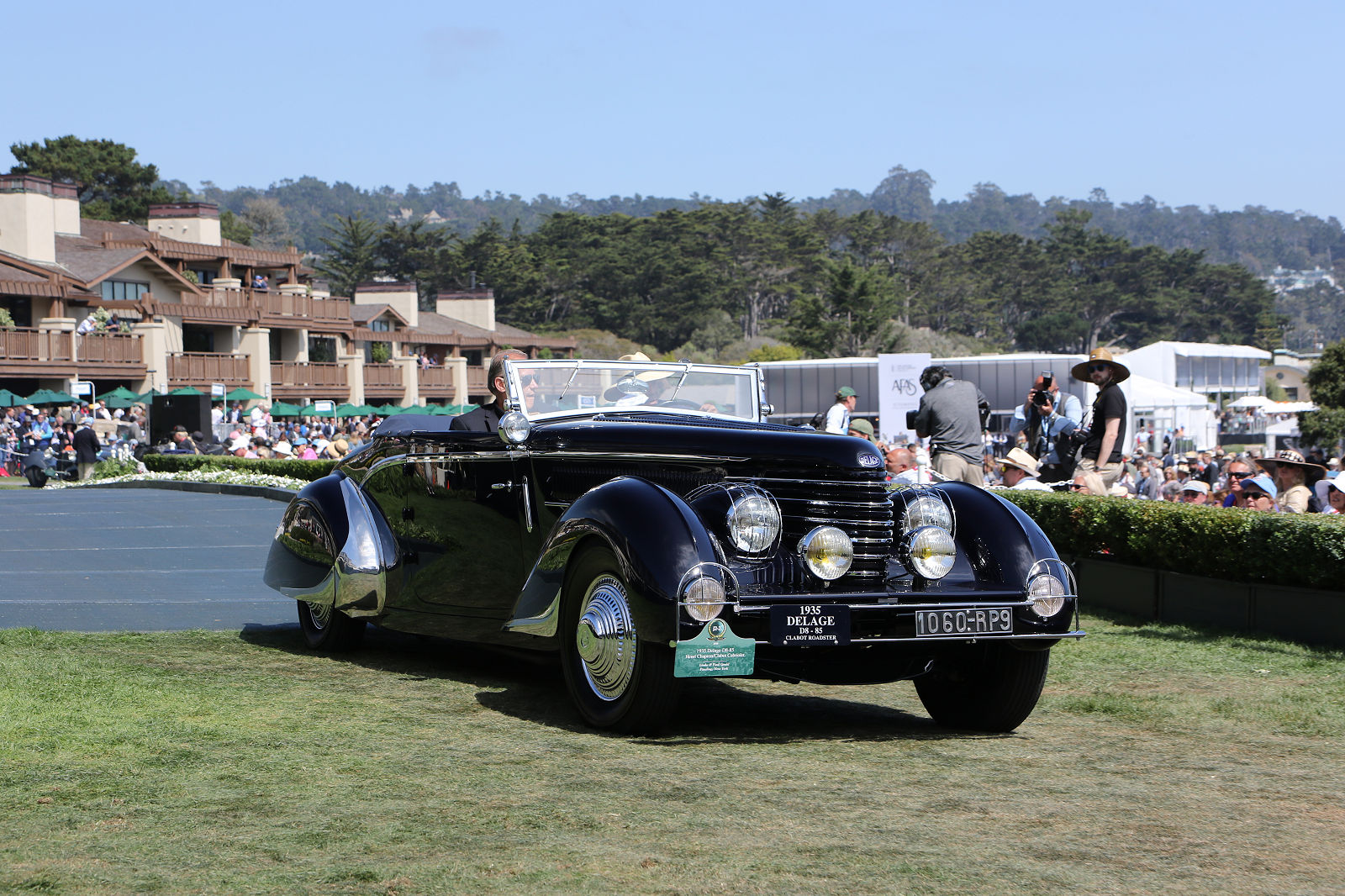
I had the same sensation the first time I went to Florence — a stunning work of art appears every time one turns a corner.
Thanks for doing this, because it reminded me just how fortunate I’ve been to go to the PBCdE for years.
One correction: There were only two Harrah’s auctions. The third one was planned but never held. Capital gains rules changed at the beginning of 1987 and Holiday Inns would have incurred a substantial tax hit so they sold the entire last third of the collection, some say the best third of the collection,in a single transaction on December 31, 1986. The buyer was General William Lyon. I’ve been told by someone who was there that they were frantically scribbling names on titles as the clock ticked down to midnight.
fabulous “behind the curtain” detail!
Thanks Brandes! What a wonderful story…
This is the type of article that adds color to an event. My compliments to the chef.
My husband and I attended Pebble, it was a beautiful day and the cars were stunning. I appreciate your wider view of the cars on display, truly added value for me. Your comments are spot on, descriptive and informational. Thank you very much.
Brandes, what an outstanding article. It was an honor and a priceless education to browse the cars on Ocean Ave with you and your pals. Thank you and best regards.
Brandes,,your excellence as a reporter not to mention your in-depth knowledge of Pebble Beach is beyond compare. We are fortunate to be able to experience this spectacular event through your eyes without the travel and cost required to attend in person. Thank you for your excellence.
Brandes,
Just an excellent article!! I have never been to the show and I’m not sure if I would be up to fighting the crowds, but your eloquent writing skills allow me to feel as if I had been there. Keep up the good work!
Jeff
It is a pleasure to read an article by a world class expert who admits he is momentarily overwhelmed–similar I imagine to a pilot arriving from England over Normndy on June 6th, 1944 and , as the clouds part, he realizes he is surrounded by hundreds of other planes heading East as well. I was there (at Pebble) as well, but had a couple of focus points to anchor me–like finding a car suitable for a portrait in oil or finding GT40 experts to ask about the now filing “Ford vs. Ferrari” film , so was able to quell the “this is too much” feeling. I hope Brandes does an article on pre-war American luxury cars there with European coachwork–you wonder what the American automakers thought when the customer announced such plans, like “What are we–chopped liver?”